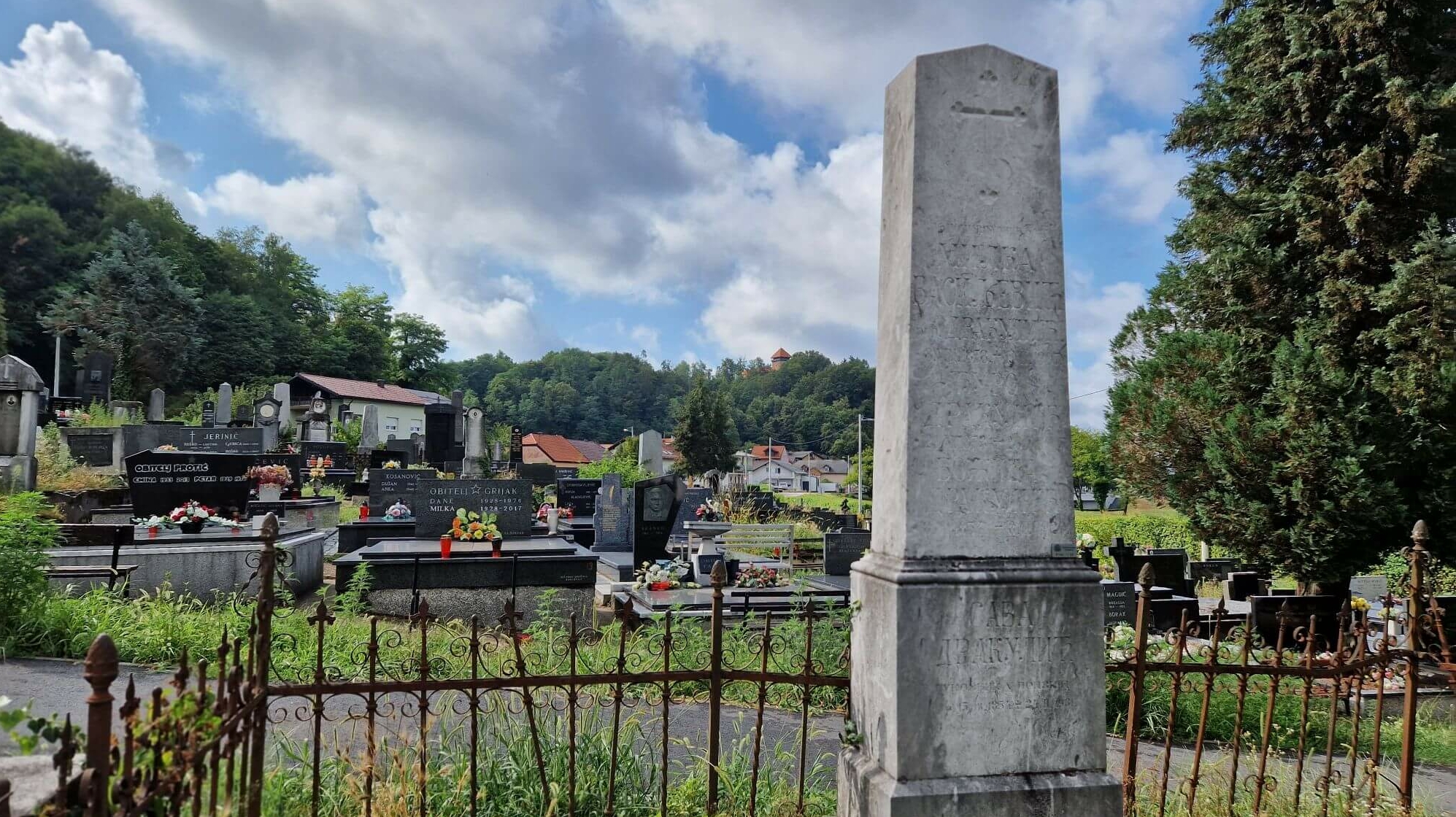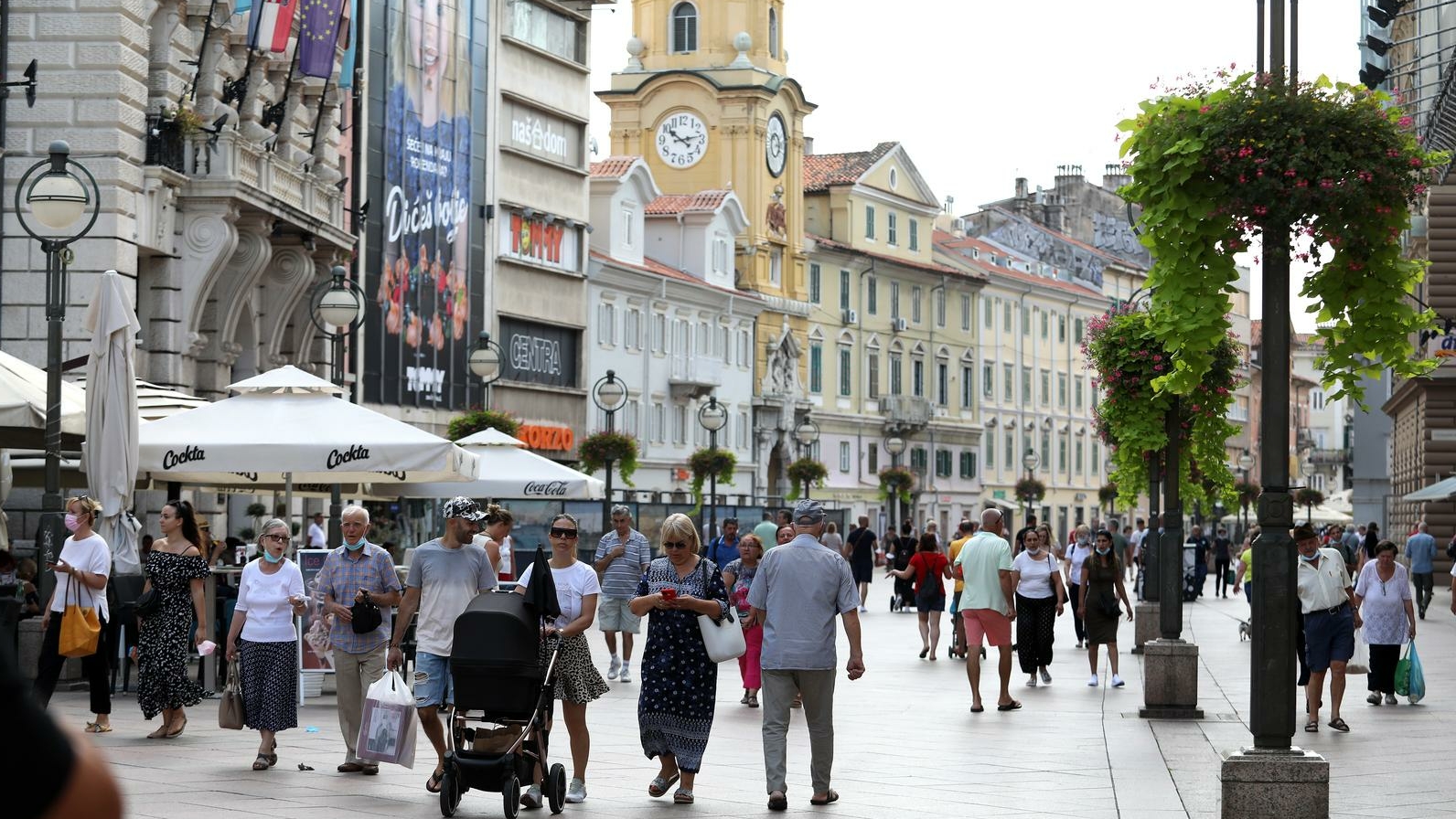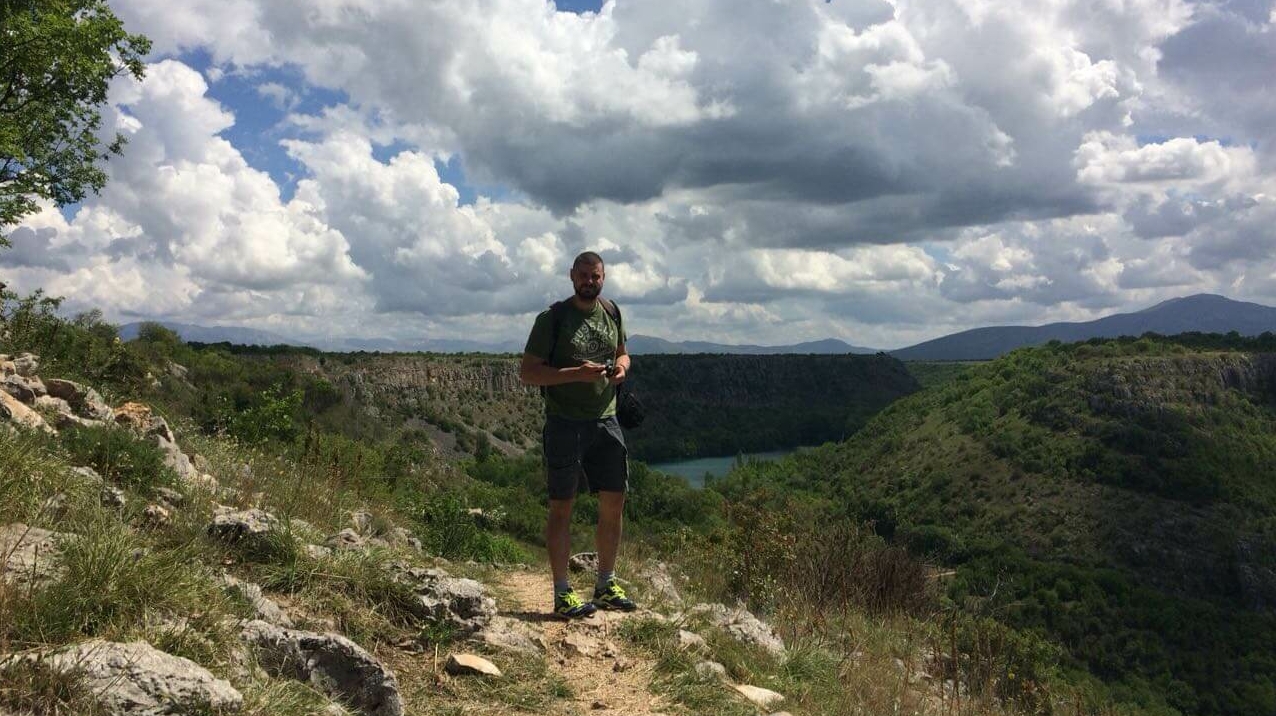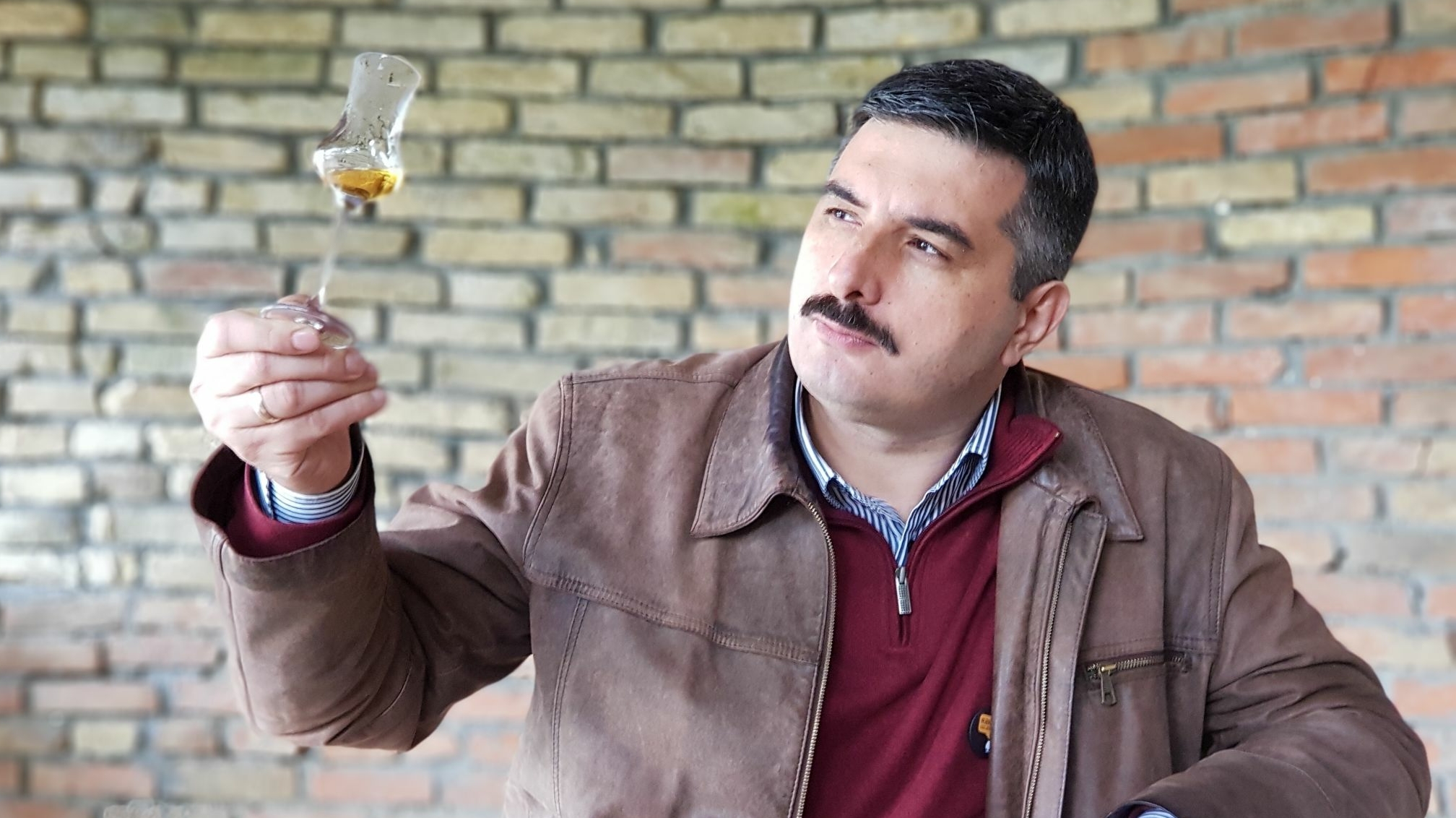The best-known Karlovac cemeteries – the Military, Jewish and Orthodox – lie next to each other under the Strmac hill and the Kozjača forest. The oldest is the Military, dominated by the gloriette designed by Hermann Bollé, also the author of the famed arcades of Mirogoj. The most famous Croatian architect of his era was born in Cologne in 1845 and died in Zagreb in 1926. He worked on the building of the Đakovo cathedral and supervised the reconstruction of the Church of St. Mark in Zagreb. In Italy, where he lived, he met Đakovo Bishop Josip Juraj Strossmayer and the art historian Isidor Kršnjavi. He would go on to build the gymnasium in Osijek, the pilgrims’ complex in Marija Bistrica and in Zagreb the chemical laboratory, the Evangelical church and central building, the Museum of Arts and Crafts, the fountain and meteorological station at Zrinjevac, the fence of the Botanical Gardens…
The gloriette, built in 1916 in honor of the fallen Austro-Hungarian soldiers of the First World War, was never finished. It is 37.2 m wide and encloses in the middle a chapel with a porch 13.5 m high and 20 arcades. “Designing this building, the famous architect had to bear in mind that he had little money to construct it. Nevertheless, the project bears the stamp of a master of his craft, a man with an unmistakable sense of space who created an impressive work with little money, using the terrain and ordinary construction materials,” Radovan Radovinović writes in the monograph Karlovac Cemeteries, authored by him and the photographer Zvonimir Gerber.
The Military Cemetery, a witness to Karlovac’s military past, is full of Serbian – that is, Orthodox – surnames on tombstones, which isn’t surprising given that Karlovac has always been a military city. Many notable civilians and officers found their eternal rest here. In 1875, Ivan Šimunić, the mayor of Karlovac who initiated the construction of the road beneath Strmac – beneath which lie the cemeteries – was buried here. Here lies retired colonel Josip Adžija, who used the 96th regiment to beautify public surfaces and so earned Karlovac’s eternal gratitude; in 1886, he was elected the first president of the City Beautification Society. It was the navigable Kupa that made Karlovac one of the richest and socially and culturally most important Croatian cities, before its importance rapidly declined.
Further on, we see the grave of Mihajlo Desović and his son Vilim – the first was an Austrian colonel who fought with Ban Josip Jelačić, and the other was a general. Viktor Njegovan, a commander of the Austro-Hungarian navy who was relieved of duty after a sailors’ mutiny in Boka Kotorska, has rested in the Military Cemetery since 1921. Colonel Petar Opačić rests here, as well as his son Miroslav Opačić, who was educated at a school for officers in Austria during the First World War and served as staff captain in Montenegro and Albania. He was engineering brigadier general in the Kingdom of Yugoslavia and was also known as an amateur painter. He died in Karlovac in 1970.
The Military Cemetery is first mentioned in the 16th century and was reconstructed in 1824, but few graves and tombstones from that period remain. The mortuary was probably built in 1897, when the cemetery was reorganized again because two large barracks were being built at the time. Karlovac then earned the epithet pensionpolis – the city of retired officers. The cemetery rapidly expanded during the First World War, when there were many soldiers in Karlovac and the mortality rate was enormous. Karlovac hospitals, converted barracks and schools were full of wounded soldiers. In the Second World War, the bodies that were not given to the families or returned to their countries were buried here. Many were exhumed and sent to Germany after the war ended. Later, when other cemeteries were full, civilians of different faiths were also buried here.
We wrote about the Jewish Cemetery in Karlovac in detail last year in the piece Barbara Turza – Life without Herta, Death without a Grave. The Orthodox Cemetery lies next to it – actually, it is hard to discern where one cemetery ends, another begins and ends and the third one begins. The line may be clearly drawn in the cadaster, but a visitor does not see it here. On the contrary – they see around them members of the Catholic, Jewish and Orthodox faith, atheists – those with five-pointed stars on their tombstones – and Muslims. The cemeteries merge into each other, and the challenges of cohabitation, not uncommon through history, disappear beneath the Strmac hill. For a while, the few Protestants of Karlovac were buried in the Orthodox Cemetery because it was forbidden to inter them in Catholic cemeteries.
By the end of this summer, the mortuary at the Jewish Cemetery will be set up, and the mortuary at the Military Cemetery is also being reconstructed, according to a spokesperson for the City of Karlovac.
The mortuary of the Orthodox Cemetery is not being reconstructed because that was done in 2004, after it was heavily damaged in the war in the 1990s. Unlike the Military and Jewish Cemeteries, the Orthodox Cemetery can be reached from two sides – from Luščić Street or from the mentioned road beneath Strmac. The mortuary is situated next to this road and is elevated above the graves and the other cemeteries. The Orthodox were at first buried in Catholic cemeteries, but as their numbers grew, a cemetery was set up just for them. At first it spread toward the Jewish Cemetery, but soon, as the Orthodox population grew, it also spread in the other direction. The oldest is the grave of the merchant Mile Skeledžić from 1799, with a new headstone from 1928. The Serbian Orthodox Community reorganized the cemetery in 1888, and the grave of the poet and Bishop of Gornji Karlovac Lukijan Mušicki got a new headstone. He was born in Temerin and died in Karlovac in 1837. Next to his is the grave of Petar Pavković, the imperial and royal captain. This neo-baroque mausoleum with elements of secession from the turn of the 20th century is classified by experts as a prime example of historicism.
The Orthodox Cemetery was filled up in 1989. Until the new cemetery, Jamadol was opened, the Orthodox of Karlovac who did not have family tombs in the Orthodox Cemetery were buried in the Jewish and Military Cemeteries. Radovan Radovinović warns that some graves important for the cultural history of Karlovac were dug up, such as the grave of Jovan Obradović, the Karlovac mayor from the second half of the 19th century, and the grave of Nikola Slavinić, a member of the committee of the Serbian Orthodox Community owing to whom the community reorganized the cemetery in 1888.
Along with Bishop Mušicki, Bishop Simeon Zloković also rests at the Orthodox Cemetery in Karlovac. He died shortly before the outbreak of the last war, and he was committed to interethnic and interfaith dialogue. He was, therefore, greatly esteemed by both the Serbs and the Croats of Karlovac. The priest and gymnasium teacher Milan Radeka was buried there in 1982 after dying in a car crash. He was one of Karlovac’s greatest intellectuals and an author of books and articles about the cultural history of Karlovac. The remains of the people’s doctor Gajo Petrović, the famous Croatian philosopher’s uncle, are also at the Orthodox Cemetery. Doctor Petrović was very popular in Karlovac.
The Orthodox Cemetery is also the last resting place of the Aromanian family Barako, a powerful merchant family of the 19th century, whose progenitors were Vasilije and his wife Jelena. The tomb is adorned with mosaics from the turn of the 20th century. One depicts the ascension of the Mother of God and the other of Jesus Christ. This and the grave of Skeledžić are not the only graves of merchants. Buried here is the wholesaler and benefactor Danilo Banjanin (1891), who founded a trust for firefighters injured in the line of duty and supported publishing. Petar Slijepčević was buried here in 1896. He bought a mill in Turanj in 1864 and successfully developed it; he was politically active as a member of the People’s Party and a representative in the Croatian Parliament and the parliament in Pest. He was the president of the Serbian Orthodox Community, a member of Matica Srpska and one of the founders of Matica Hrvatska.
Cemeteries in Karlovac, as testimonies to existence and peaceful cohabitation, were not clearly demarcated, and the need to honor this frontier life on the border united faiths and ethnicities in one fate. Friends and enemies became one.
Translation from Croatian: Jelena Šimpraga








